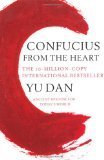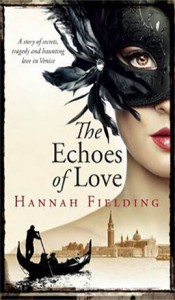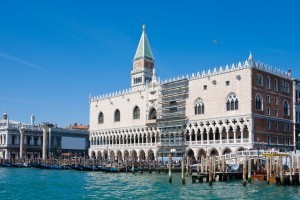Hannah Fielding's Blog, page 112
January 21, 2014
The legends of the devil’s bridges
Did you know that scattered across Europe are dozens of ‘devil’s bridges’ – ancient stone arch bridges crossing waterways, each with its own particular, spooky legend?
There are some 49 such bridges in France, where I live for part of the year, so I was already familiar with the concept when I came across it during the research for my new novel, The Echoes of Love, which is set in Venice and Tuscany.
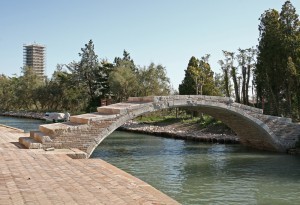 In Venice, the devil’s bridge is on the fascinating lagoon island of Torcello, population just 20, and home to the Cathedral of Santa Maria Assunta (dates back to 639 and has some amazing Byzantine mosaics); the Church of Santa Fosca; the Museo Provinciale di Torcello housed in two palaces; and an ancient stone chair known as Attila’s Throne. But the Ponte del Diavolo is one of main draws for visitors to the island.
In Venice, the devil’s bridge is on the fascinating lagoon island of Torcello, population just 20, and home to the Cathedral of Santa Maria Assunta (dates back to 639 and has some amazing Byzantine mosaics); the Church of Santa Fosca; the Museo Provinciale di Torcello housed in two palaces; and an ancient stone chair known as Attila’s Throne. But the Ponte del Diavolo is one of main draws for visitors to the island.
Here is one legend of the Torcello bridge, as told by my hero Paulo in The Echoes of Love:
‘During the occupation of Austria, a young Venetian girl fell in love with an Austrian soldier. Her family disapproved of this union and the young man was murdered. The girl was so desperate that she went to a magician who made a pact with the Devil to bring the soldier back to life, in exchange for the souls of seven children. The contract between the Venetian girl and the Devil was signed and the meeting place was the bridge of Torcello. When the sorcerer and the girl went to the meeting, they saw the Devil and the young man on the other side of the bridge. The girl crossed the bridge and the lovers fled. When the time for payment came, the sorcerer and the Devil arranged a new meeting at the bridge, but on the way to the rendezvous the magician died of natural causes before he got there. And from that day onwards, it is said that every night the Devil appears on the bridge waiting for the souls of those seven children.’
Certainly a story to keep children well away from the bridge at night!
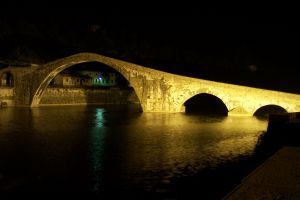 In Tuscany, the famous devil’s bridge is the Ponte della Maddalena. It’s situated in the province of Lucca, near the town of Borgo a Mozzano, and it crosses the Serchio river. In the past, it was part of a medieval road to Rome much-travelled by those on pilgrimages.
In Tuscany, the famous devil’s bridge is the Ponte della Maddalena. It’s situated in the province of Lucca, near the town of Borgo a Mozzano, and it crosses the Serchio river. In the past, it was part of a medieval road to Rome much-travelled by those on pilgrimages.
Here is one of the legends attached to the bridge:
When the Ponte della Maddalena was constructed, the builder was horrified to find that on the eve of its completion it began to crumble. How he would be punished by the town authorities! He was sitting on the bridge, head in his hands in despair, when the devil appeared to him and offered him a deal: the devil would magically repair the bridge that night, but in return he would claim the soul of the first person to cross the completed construction. Desperate, the builder agreed.
The next day all of the townspeople turned out to witness the official opening of the mighty bridge. It was beautiful. It was a feat of engineering. The builder was overcome by all the praise, and his guilt rose up and engulfed him. He found himself seeking out the bishop of the province and confessing to his deal with the devil. The bishop was a canny man, and so he sent a pig first across the bridge. Up came the devil to claim his soul. He was most unimpressed to be confronted by a snorting animal, and in his rage he blasted an immense hole beneath the bridge which would claim the people who fell when the bridge broke.
And yet, years went by – hundreds of years – and the bridge remained strong and intact. Still, those walking across the bridge are not complacent: the devil is waiting still for that soul, so if any person stands too long on the bridge the waters will come up and sweep them under, down, down, down…
Deliciously chilling, don’t you think?
January 20, 2014
The wisdom of Confucius for a lost and lonely heart
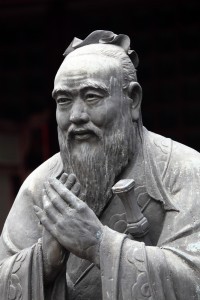 In each of my novels I weave in a wiser, older character whose role is to guide my heroine (in part, I do so in the memory of my childhood governess, Zula, who so inspired me). In Burning Embers Coral’s yaha (nanny) Aluna filled the role – albeit her guidance was tinged with the superstitions of her native people. In The Echoes of Love, I decided to make the guide a little different.
In each of my novels I weave in a wiser, older character whose role is to guide my heroine (in part, I do so in the memory of my childhood governess, Zula, who so inspired me). In Burning Embers Coral’s yaha (nanny) Aluna filled the role – albeit her guidance was tinged with the superstitions of her native people. In The Echoes of Love, I decided to make the guide a little different.
Qiqiang Ping Lü is a frail old Chinese man who tells fortunes and gives guidance from his shop near the Ponte del Paradiso. He is a dignified, cordial, kindly man who sees in Venetia a lost soul and is most generous in giving her the benefit of his learnings as a scholar of Confucius.
I myself have read widely of the works of Confucius, and I have always found his philosophy full of wisdom. My character, Venetia, is so embroiled in a world of mirage and uncertainty that I knew a little touch of Confucian input would help set her on the right path.
Three teachings of Confucius, relayed by Ping Lü, in particular help Venetia:
By three methods we may learn wisdom: first, by reflection, which is the noblest; second, by imitation, which is the easiest; and third by experience, which is the bitterest. For Venetia, the first and last are of most importance: she must search inside herself and be prepared to learn, to reconsider, to think; and she must also be brave enough to experience her emotions, experience being with Paolo, though in doing so she risks the experience being painful.
To be wronged is nothing unless you continue to remember it. As Ping Lü says to Venetia, ‘Crush the rose of anger, my child, so it may only leave its delicate fragrance on your hands. Learn to forgive an evil deed so you do not remain the victim of its consequences forever.’ Venetia is holding on to the pain of a lost love – a man who abandoned her when she most needed him. But how can she move on and find love with Paolo if she is trapped in the past, lost in its echoes?
Never does the human soul appear so strong as when it foregoes revenge and dares to forgive an injury. I find this advice most powerful and most moving. The word ‘dare’ leaps out at me. It takes courage to forgive, to let go. It is daring. It is brave. These are certainly terms I’d apply to Venetia’s character in other senses – after all, she has left her homeland, England, and forged a great career as an architect in a foreign city. But can she be this courageous when it comes to her heart?
It is amazing to think such wisdom dates back thousands of years. Confucius lived from 551–479 BC. There are so many other pearls of wisdom from the philosopher I could have included in the book; he’s perhaps the most prolific and most well-read philosopher of all time. Take the following handful out of many, many quotations as an example:
Be not ashamed of mistakes and thus make them crimes.
I hear and I forget. I see and I remember. I do and I understand.
It does not matter how slowly you go so long as you do not stop.
Our greatest glory is not in never falling, but in getting up every time we do.
Respect yourself and others will respect you.
Study the past if you would define the future.
To be able under all circumstances to practice five things constitutes perfect virtue; these five things are gravity, generosity of soul, sincerity, earnestness and kindness.
When anger rises, think of the consequences.
If you’re interested in Confucius, you’ll find all his wisdom laid out in The Analects, which is the classic tome of his philosophies. But for a more modern take (and a powerful one; this book has sold more than ten million copies!) take a look at Yu Dan’s Confucius from the Heart: Ancient Wisdom for Today’s World– a great gift for a loved one, especially yourself.
January 19, 2014
Book review: Flavia’s Secret by Lindsay Townsend
From the blurb:
Spirited, young scribe Flavia hopes for freedom. She and her fellow slaves in Aquae Sulis (modern Bath) have served the Lady Valeria for many years, but their mistress’ death brings a threat to Flavia’s dream: her new master Marcus Brucetus, a charismatic, widowed officer toughened in the forests of Germania. Flavia finds him overwhelmingly attractive but she is aware of the danger. To save her life and those of her ‘family’ she has forged a note from her mistress. If her deception is discovered, all the slaves may die. For his part torn between attraction and respect, Marcus will not force himself on Flavia. Flavia by now knows of his grief over the deaths of his wife Drusilla and child. But how can she match up to the serene, flame-haired Drusilla? As the wild mid-winter festival of Saturnalia approaches, many lives will be changed forever.
A thoroughly enjoyable historical romance novel.
From the first page I was hooked – the author’s writing is most engaging, and she creates the atmosphere of this bygone time beautifully. Best of all, I found I could totally relax into the writing because it is credible and feels well-researched: I was entirely transported to the time and place in history, and I loved all the details of the setting, from the Roman baths to the clothing and the food.
This is no surface-level romance – there’s a lot of depth to the book, which I found really interesting and compelling. I was especially intrigued by the mystery of Lady Valeria’s death, and I loved the drama created by the villain of the piece.
The characters jumped right off the pages into my imagination. Flavia is easy to like and to root for, and I felt such sympathy for her for the lack of freedom she had to endure as a slave. I love how courageous she is, and principled. Marcus is a wonderful alpha male hero – I fell in love with him the moment he rescued a young slave boy and adopted him as a surrogate son. I really liked the development of Flavia and Marcus’s relationship in the book, which felt mature and true-to-life while also remaining full of emotion and passion.
Overall, this is a book full of historical context, intelligent exploration of the time, drama, intrigue and romance – all conveyed through a well-crafted writing style that makes for enjoyable and easy reading. It is a book I would recommend to any reader who loves romantic historical fiction. Having read Flavia’s Secret I’m delighted to have found a great new author whose books I can add to my ‘to read’ list.
I was offered this book in exchange for a fair review.
Flavia’s Secret is available now from Amazon; click on the book cover below to visit the store.
January 15, 2014
In the mood for dancing? Try the Forlana
There were only four or five ladies of the highest rank; all the others, who were more or less pretty, were favourites of the prince, all his days a great lover of the fair sex. Two of these ladies danced the Forlana, and the Elector was much amused in making me dance it also. I have already said that the Forlana is a Venetian dance, and one of the most energetic kind imaginable.
…
The nymph took her place, I did the same, and we danced the forlana six times without stopping. I was in perspiration and out of breath, for the forlana is the most violent of our national dances; but my beautiful partner stood near me without betraying the slightest fatigue, and seemed to challenge me to a new performance.
So does Casanova describe the traditional and wild Venetian courtship dance in his memoirs (for more on this legendary lover, see my post ‘A Venetian lover, and writer: Casanova’).
This folk dance originated in the 16th century in Friuli Venezia Giulia, which was part of the Republic of Venice, and it was all the rage at Venetian parties and in the dance halls and theatres. Casanova’s description conveys beautifully that this is a fast dance, and it is one of courtship performed by a couple or several couples. I can only imagine the fun my character in The Echoes of Love would have attempting to keep up with this dance, had they the opportunity to try it!
Here’s a video of the Forlana. This is quite a sedate version, but I have seen at Venetian events some really quite frenetic dances. I love the passion and abandon and joy embodied in this old-style courtship.
January 14, 2014
No Strings Attached Giveaway Hop: WIN a copy of my novel The Echoes of Love
No Strings Attached Giveaway Hop: WIN a copy of my novel The Echoes of Love
Today I’m delighted to be participating in I Am a Reader, Not a Writer’s ‘No Strings Attached Giveaway Hop’.
The concept is simple:
Win a paperback copy of my passionate, tumultuous romance novel The Echoes of Love…
… simply by commenting on this post with your name and contact details by the end of 21st January. International entries are welcome.
Good luck!
The Venetian Doge
My favourite place in Venice has to be the St Mark’s Square (Piazza San Marco), and a major reason for the draw is the stunning architecture that surrounds it. One of the famous and beautiful buildings – and a major tourist attraction for that reason – is the Doge’s Palace (Palazzo Ducale).
A superb example of Venetian Gothic architecture and dating back to the 14th century, the palace dominates the square and, to the other side, the Grand Canal – and from it springs the famous Bridge of Sighs (see my post on the bridge). Today it is a museum, visited by some one million tourists each year who come as much to admire the beauty of the building itself as the exhibitions housed within. But for centuries its raison d’être was as the residence of the Doge of the day.
But who exactly was the Doge?
The Doge was, quite simply, the head of the Venetian Republic. (The Republic was a state that existed from the 7th century to 1797; it was known as La Serenissima, the ‘Most Serene Republics’). The word ‘Doge’ comes from the Latin word ‘dux’, which means military leader, but the traditional English translation for the title is ‘Duke’. The Duke was the supreme authority of the Republic, and Doges ruled over Venice for more than a thousand years.
The title ‘Duke’ is perhaps misleading. The Doge was not a position passed down as hereditary – he was elected; but, like a Duke, his was a job for life. He was in charge of more than military matters – he was the civil and ecclesiastical leader in addition. As the head of all, he was most revered in his role; his titles ranged from ‘My Lord the Doge to ‘His Serenity’. Over time, though, the role became more ceremonial than powerful, and eventually the position was cancelled – the last Doge, Ludovico Manin, abdicated when Napoleon conquered the city.
I have written already on this blog of the famous Venice annual regatta, at the head of whose procession is the Bucintoro, the state galley of the Doges of Venice. This was traditionally used in the Marriage of the Sea ceremony. Each year, on the Festa della Sensa (Ascension Day), officials would travel in the Bucintoro out to San Nicolò on the Lido, where the patriarch of Venice would bless a golden ring and then pass it to the Doge to throw a ring into the Adriatic, to symbolically wed Venice to the sea. The ceremony still exists to this day, but without the Doge.
Here’s a short video about the modern Marriage of the Sea ceremony:
January 13, 2014
The Echoes of Love song
Back when my debut novel, Burning Embers, was newly released, I found on the internet a song with the same title, and was quite taken but it (see my post ‘Burning Embers – the song’).
A similar web search recently uncovered three songs whose titles tie into The Echoes of Love, my new book.
First, there is ‘Echo of Love’ by the British band The Shutes. I love the opening lines:
It started with explosions, the sound of bombs in your heart
But just like everything, just like everything the sounds would fade and fall apart
I imagine my heroine Venetia listening to this song when she thinks of her lost love, Judd.
An entirely different sound, but really quite restful and romantic, is to be heard in Omar Akram’s instrumental ‘Echo of Love’:
And finally, back to the 1970s with the Doobie Brothers and their song ‘The Echoes of Love’. The music doesn’t quite say ‘romance’ to me, but I do like the lyrics:
Echoes of love
Keeps on haunting
And:
I hear your voice everywhere
It’s echoes of love
Making me look back over my shoulder
January 12, 2014
Favourite poem: ‘When Passion’s Trance Is Overpast…’ by Percy Bysshe Shelley
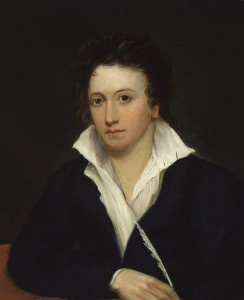 I love the Romantic poets – Blake, Wordsworth, Coleridge, Byron, Keats – but perhaps, for me, the most romantic of them all is Percy Bysshe Shelley, (somewhat incongruously for his romanticism) husband to Mary Shelley of Frankenstein fame.
I love the Romantic poets – Blake, Wordsworth, Coleridge, Byron, Keats – but perhaps, for me, the most romantic of them all is Percy Bysshe Shelley, (somewhat incongruously for his romanticism) husband to Mary Shelley of Frankenstein fame.
Shelley (1792–1822) never saw success or acclaim for his works during his lifetime, sadly, but today he’s regarded as one of the finest lyric poet, and he was an inspiration of many great writers to come, from Robert Browning and Thomas Hardy, WB Keats to Henry David Thoreau.
Today, I’m sharing one of my favourite Shelley poems, which inspires my own romanticism and my writing. ‘When Passion’s Trance Is Overpast’ came to mind as I wrote The Echoes of Love, my new novel set in Italy. The heroine, Venetia, is defensive and distrustful of the hero, Paolo, and though she is deeply attracted to him, she keeps pushing him away, leaving Paolo with little choice but to tell her he will back away, but to also convey how that will pain him:
‘Of course, if you persist in being blind and pushing me away,’ he said, ‘I will not pursue you anymore. I’ll be your friend as you asked from me once, and I’ll try to quench my thirst at more accessible streams.’ He laughed a rough, deep, humourless sound that shimmied its way to the far end of Venetia’s soul. ‘I’ve been doing it for so long now – bitter water they might be after you, cara, but I will have no other solution, and I will “dream the rest, and burn” for you, “the secret food of my fires unseen.”’
The quote is from the following Shelley poem.
To___ (When Passion’s Trance Is Overpast…)
I.
When passion’s trance is overpast,
If tenderness and truth could last,
Or live, whilst all wild feelings keep
Some mortal slumber, dark and deep,
I should not weep, I should not weep!
II.
It were enough to feel, to see,
Thy soft eyes gazing tenderly,
And dream the rest–and burn and be
The secret food of fires unseen,
Couldst thou but be as thou hast been.
III.
After the slumber of the year
The woodland violets reappear;
All things revive in field or grove,
And sky and sea, but two, which move
And form all others, life and love.
I love the evocative, sensual language of this poem: passion, trance, tenderness, wild, slumber, dark, deep, weep, soft, tenderly, dream, fires, love. These are the very words of romance; they make something within melt. I also find the mix of hope and melancholy poignant – oh that passion’s ‘trance’, that first, heady rush of new love, would never pass! And yet, what comes afterwards is a tenderness that is appealing too – if only the loved one reciprocates.
If, like me, you find Shelley’s words wonderfully moving, be sure to read some of his other love poems:
Love’s Philosophy
Love’s Rose
To the Queen of My Heart
When Soft Voices Die
The Indian Serenade
January 10, 2014
How far does good writing require full exposure of the self?
I’m commonly asked, ‘How much of yourself do you put into your writing? How far are your books based on your actual experiences?’
The answer is twofold:
All my writing is inspired by experience… For example, ideas for characters and plot points can be based on some tiny stroke of inspiration that came in my daily life – Burning Embers’ opening scene popped into my mind as I gazed out at a moonlight ocean liner, and the two faces of Venice that I explore in The Echoes of Love began life in a realisation I had while visiting the city as a child (see my earlier post on this). And of course I research the settings of my books carefully, so all kinds of experiences I’ve had of locations come to the fore as I write.
… But my characters and my stories are fictional. No friend or relative reading one of my books would recognise him- or herself in a character – or think that my heroine was me on paper. No part of a story is a retelling of something that happened to me in my life. My romances are born of my imagination.
A basic rule of good writing is ‘Write about what you know’. I know romance. I know exotic locations. I know mystery and intrigue. Thus, I write books based on these things that I know. But for me, that is as far as the rule need extend. Writing about what you know does not mean exposing all that you know.
Any kind of creative – painter, sculptor, architect, writer, dancer, actor and so on – gives a little of him- or herself to the artwork. The creator looks at the work and sees all the influences and the little glimpses of the self. But the crucial word is glimpse. The work is separate, outside of the self, and everyone, whether creating work for the public appreciation or not, is entitled to privacy.
And yet, there are some who advocate exposure. For example, Allen Ginsberg advised, ‘Follow your inner moonlight; don’t hide the madness.’
The truth is that a writer treads a fine line between writing what he or she needs and desires to write, and writing with a mind on how he or she will be judged by the writing. Those who write grisly murder mysteries or highly erotic novels, for example, require a certain courage for when an interviewer asks, ‘How much of yourself do you put into your writing? How far are your books based on your actual experiences?’ – always with the expectation that the author is not wholly imaginative but has lived out the sensational elements of the plot. A faint-hearted writer may be so concerned about judgement that consequently he or she shies away from experience-based writing; but the result is invariably a book that does not feel authentic.
The key, ultimately, is balance. Keeping enough of yourself private that you are comfortable in yourself. But at the same time, having the courage to follow Gustave Flaubert’s wisdom: ‘You must write for yourself, above all. That is your only hope of creating something beautiful.’
What do you think on the subject? How far do you separate an author from his or her story as you read? Would you feel cheated to learn that an author had not experienced personally an incident that was powerfully narrated? Do you accept the strength of imagination? Which parts of a book ought to be grounded in real experience? I would love to hear your thoughts.


